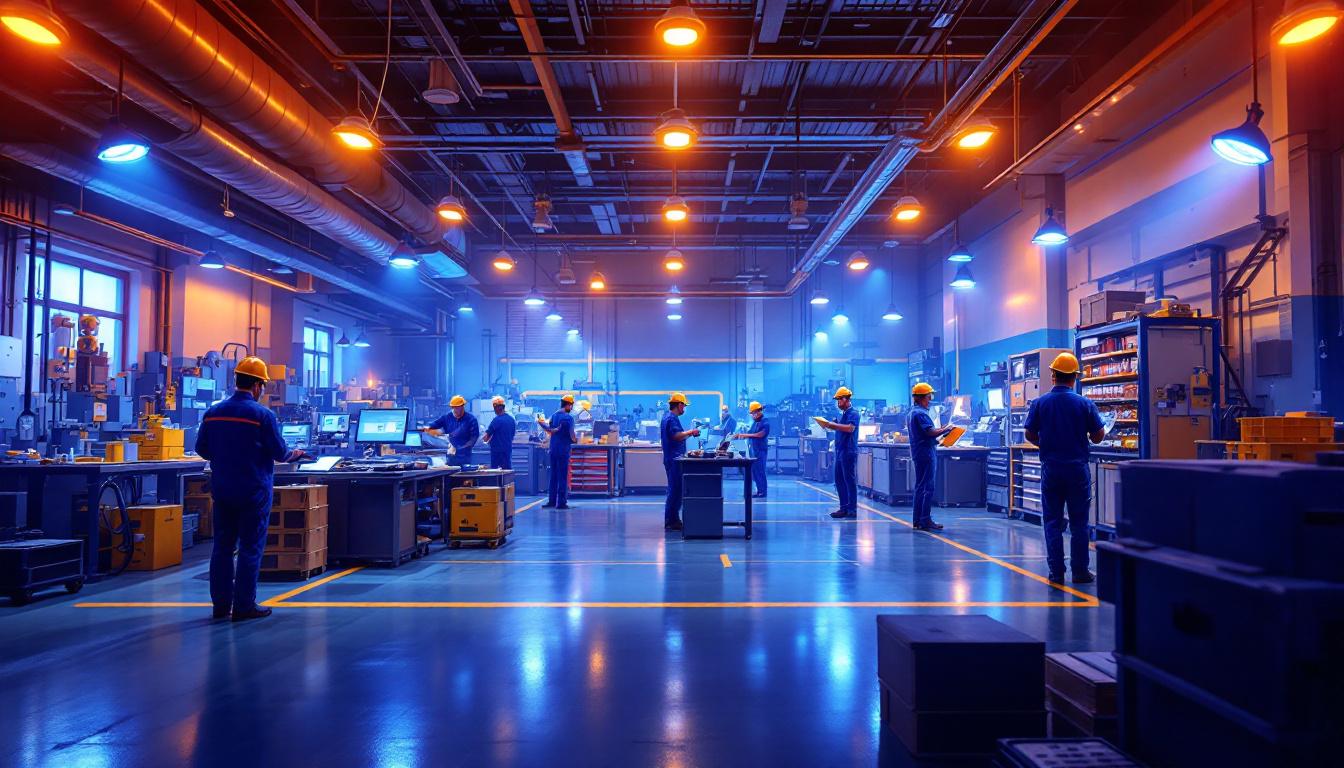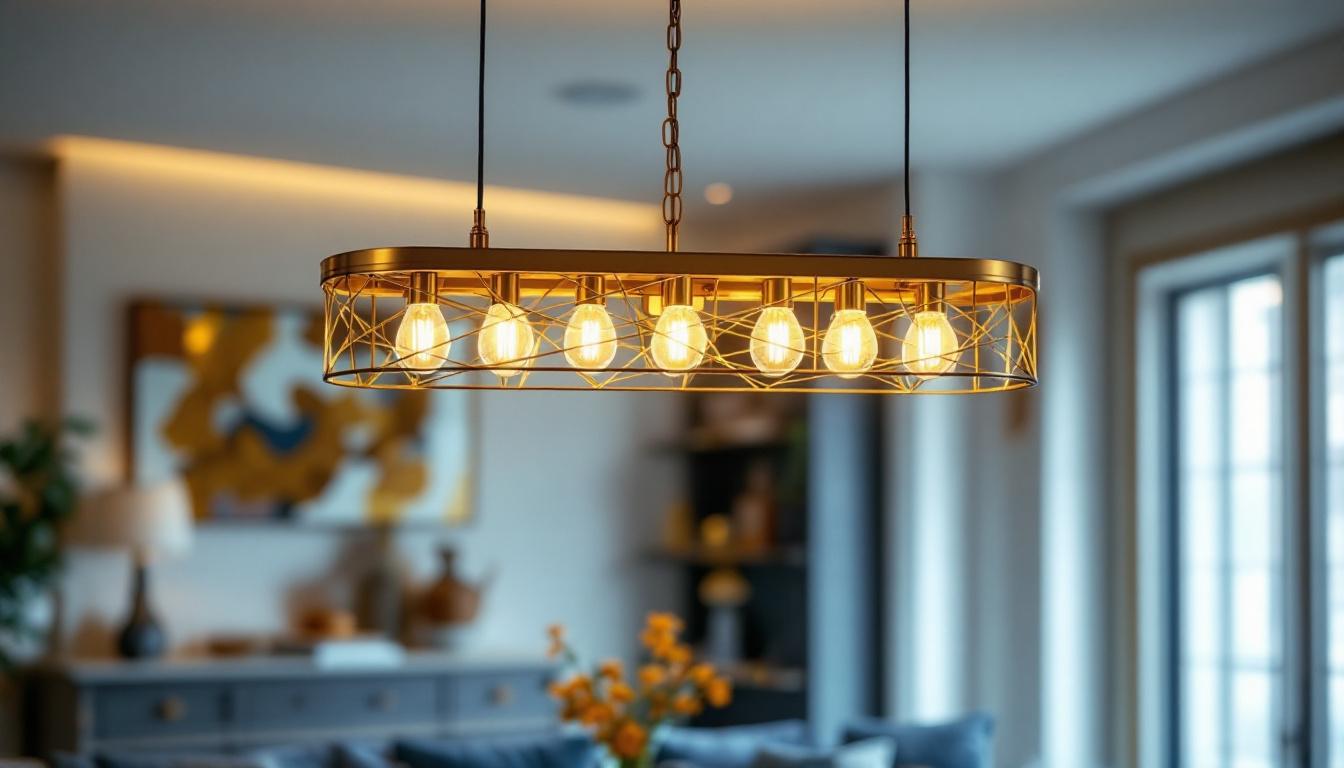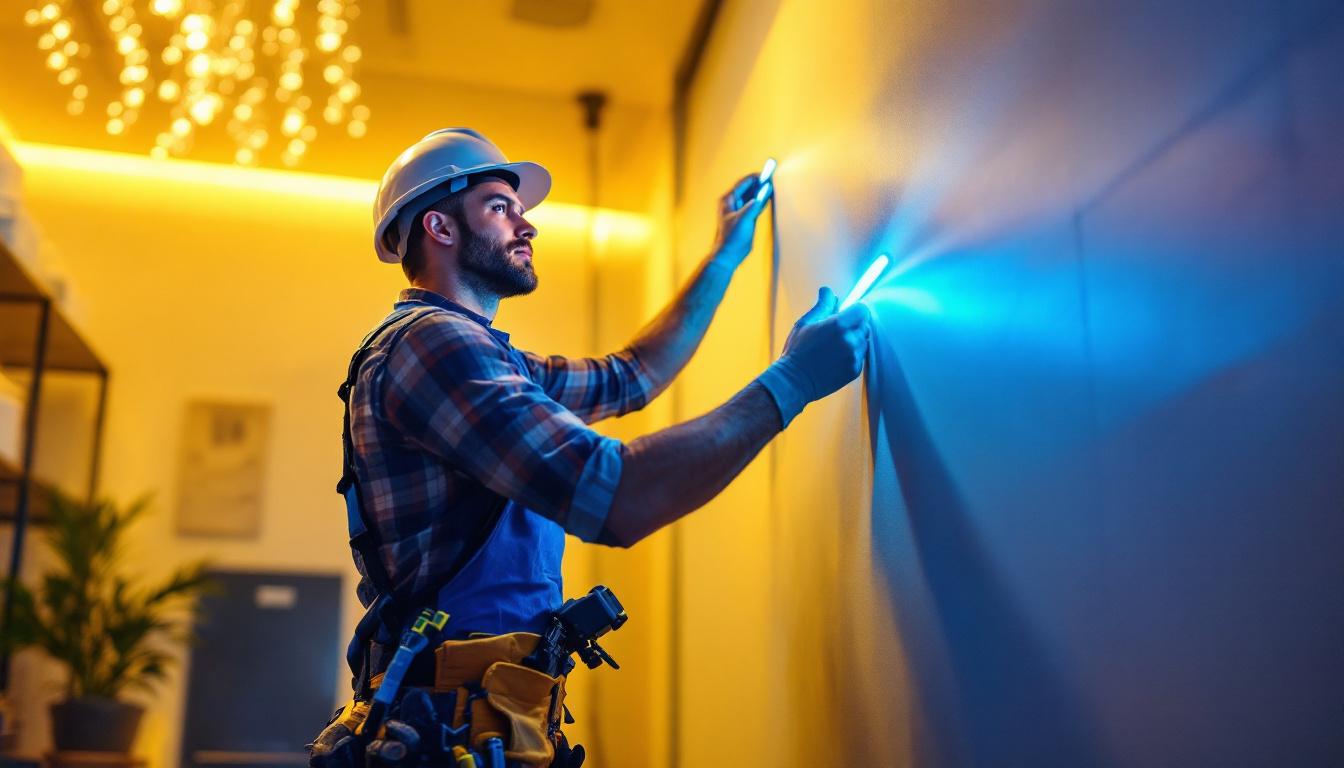
Lighting plays a critical role in the operational efficiency and safety of factory environments. Proper lighting installations not only enhance visibility but also significantly contribute to the overall safety of workers. This article delves into the various aspects of factory lighting and how it enhances safety in lighting installations.
In industrial settings, the importance of adequate lighting cannot be overstated. Factories often involve complex machinery, hazardous materials, and intricate workflows. Poor lighting can lead to accidents, decreased productivity, and increased operational costs. Thus, ensuring that factory lighting meets the required standards is essential for maintaining a safe working environment.
One of the primary benefits of proper factory lighting is the reduction of workplace accidents. Insufficient lighting can obscure potential hazards, making it difficult for workers to navigate their surroundings safely. By implementing well-designed lighting systems, factories can illuminate walkways, machinery, and storage areas, significantly lowering the risk of slips, trips, and falls.
Moreover, adequate lighting enhances the visibility of warning signs and safety equipment, ensuring that employees are aware of potential dangers. This proactive approach to safety can lead to a noticeable decrease in workplace injuries, fostering a culture of safety and responsibility among workers.
Proper lighting not only contributes to safety but also enhances worker comfort. A well-lit environment can reduce eye strain and fatigue, allowing employees to focus better on their tasks. Studies have shown that good lighting can lead to increased productivity, as workers are less likely to be distracted by poor visibility or discomfort.
Furthermore, the psychological impact of lighting should not be underestimated. Bright, well-distributed lighting can create a more positive atmosphere, encouraging collaboration and motivation among team members. This, in turn, can lead to improved job satisfaction and retention rates.
In addition to these benefits, the type of lighting used in factories can also influence the overall mood and energy levels of employees. For instance, natural light has been shown to have a significant positive effect on workers’ well-being. Factories that incorporate windows or skylights not only reduce energy costs but also provide workers with a connection to the outside world, which can enhance their mood and reduce stress levels. The strategic use of color temperature in artificial lighting can also play a role; warmer tones can create a cozy atmosphere, while cooler tones can enhance alertness and focus, allowing for a tailored approach to different tasks throughout the day.
Moreover, the implementation of smart lighting systems can further optimize factory operations. These systems can adjust the intensity and color of the lighting based on the time of day or specific tasks being performed, ensuring that workers always have the best possible lighting conditions. This adaptability not only promotes efficiency but also demonstrates a commitment to employee welfare, which can be a significant factor in attracting and retaining top talent in the competitive industrial sector.
When it comes to factory lighting, various solutions can be employed to enhance safety and efficiency. Each type of lighting has its unique advantages and applications, making it essential for lighting contractors to understand the options available.
LED lighting has become increasingly popular in industrial settings due to its energy efficiency and long lifespan. Unlike traditional incandescent bulbs, LEDs consume significantly less energy and have a lifespan that can exceed 25,000 hours. This not only reduces energy costs but also minimizes the frequency of replacements, leading to lower maintenance expenses.
In terms of safety, LED lights provide excellent illumination without producing excessive heat, reducing the risk of burns or fire hazards. Additionally, they can be dimmed or tuned to specific color temperatures, allowing for customized lighting solutions that cater to different tasks and environments.
Fluorescent lighting has been a staple in industrial environments for decades. These lights are known for their brightness and ability to cover large areas effectively. They are particularly useful in spaces where high levels of illumination are required, such as assembly lines and warehouses.
However, while fluorescent lights are effective, they can sometimes flicker or produce harsh light, which may lead to discomfort for workers. Therefore, it is crucial to choose high-quality fluorescent fixtures that minimize these issues and provide a consistent light output.
HID lighting is another option for factory environments, particularly in large spaces with high ceilings. These lights are known for their powerful illumination and are often used in outdoor areas or large indoor facilities. HID lights can provide excellent visibility, which is essential for safety in expansive work areas.
However, HID lights may take time to warm up and reach full brightness, which can be a drawback in some situations. Additionally, they may require more frequent maintenance than LED options. Therefore, careful consideration should be given to the specific needs of the factory when selecting HID lighting.
Effective lighting design is crucial for maximizing safety and efficiency in factory environments. Several factors must be considered to create a well-illuminated workspace that meets the needs of both the facility and its employees.
One of the primary considerations in lighting design is achieving appropriate light levels throughout the factory. Different tasks may require varying levels of illumination, so it is essential to assess the specific needs of each area. For example, assembly lines may require brighter lighting than storage areas.
Uniformity is equally important. Inconsistent lighting can create shadows and dark spots, which may pose safety hazards. A well-designed lighting layout should ensure that light is distributed evenly across the workspace, minimizing the risk of accidents and enhancing overall visibility.
In many factories, specific tasks may require specialized lighting solutions. Task-specific lighting can help to enhance safety and productivity by providing targeted illumination where it is needed most. For instance, workstations that involve intricate assembly may benefit from focused task lighting to reduce eye strain and improve accuracy.
In addition to task lighting, it is also essential to consider the placement of emergency lighting. In the event of a power outage or emergency situation, well-placed emergency lights can guide employees safely to exits and minimize panic.
Modern lighting control systems offer numerous advantages for factory environments. Automated lighting solutions can adjust light levels based on occupancy, time of day, or specific tasks, ensuring that energy is used efficiently while maintaining safety standards.
Moreover, these systems can be integrated with other safety protocols, such as alarms and emergency response systems, to create a comprehensive safety network within the factory. By investing in advanced lighting control technologies, factories can enhance both safety and operational efficiency.
Adhering to safety standards is a fundamental aspect of factory lighting installations. Various regulations govern lighting levels, fixture types, and installation practices, ensuring that workplaces remain safe for employees.
Lighting contractors must be well-versed in the regulatory requirements that apply to factory lighting. These regulations may vary by region and industry, so it is essential to stay informed about the latest guidelines. Compliance with these standards not only ensures safety but also protects the factory from potential legal issues.
In many cases, regulatory agencies provide guidelines on minimum illumination levels for different types of workspaces. Contractors should familiarize themselves with these requirements to design lighting solutions that meet or exceed the necessary standards.
Compliance with safety standards also involves regular inspections and maintenance of lighting systems. Over time, fixtures may degrade, bulbs may burn out, and wiring may become compromised. Routine maintenance checks can help identify potential issues before they lead to safety hazards.
Establishing a maintenance schedule ensures that lighting systems remain in optimal condition, providing consistent illumination and reducing the risk of accidents. Additionally, keeping detailed records of inspections and maintenance can demonstrate compliance with safety regulations.
While proper lighting is essential for safety, it is equally important to educate employees about its significance. Training programs can help workers understand the role of lighting in their safety and productivity, fostering a culture of awareness and responsibility.
Training sessions should cover the importance of maintaining a well-lit environment and the potential hazards associated with poor lighting. Employees should be encouraged to report any issues with lighting, such as flickering bulbs or dark spots, to ensure that problems are addressed promptly.
Moreover, safety training should include information about the proper use of personal protective equipment (PPE) in conjunction with lighting. For example, workers should be reminded to wear appropriate eyewear when working under bright lights or in areas with high glare.
Creating an open line of communication between management and employees can foster a culture of continuous improvement regarding factory lighting. Regular feedback sessions can help identify areas for enhancement and ensure that the lighting system meets the evolving needs of the workforce.
By involving employees in the decision-making process, factories can create a safer and more productive environment that prioritizes the well-being of all workers.
Factory lighting is a critical component of safety in industrial environments. By understanding the various types of lighting solutions, design considerations, compliance requirements, and the importance of training, lighting contractors can create effective installations that enhance safety and productivity.
Investing in proper lighting not only reduces the risk of accidents but also promotes a positive work atmosphere that encourages employee engagement and satisfaction. As factories continue to evolve, so too must the approaches to lighting, ensuring that safety remains a top priority in every installation.
Ready to elevate the safety and productivity of your factory installations with superior lighting solutions? Look no further than LumenWholesale. We provide contractors with high-quality, specification-grade lighting products at unbeatable wholesale prices. Our extensive selection is designed to meet the highest industry standards, ensuring you get the most reliable and high-performance lighting for your projects. Plus, with free shipping on bulk orders, you can enjoy premium lighting at the best value—without hidden fees or compromises. Don’t settle for less; choose LumenWholesale for quality, affordability, and convenience. Wholesale Lighting at the Best Value is just a click away.

Discover how ceiling fan lamps are revolutionizing the work of lighting contractors by enhancing energy efficiency and streamlining installations.

Discover expert insights and practical tips for lighting contractors on installing can lights in kitchens.

Discover the ultimate guide to antique brass linear chandeliers for lighting contractors.

Discover essential tips for lighting contractors to avoid common pitfalls when installing flat LED tape lights.